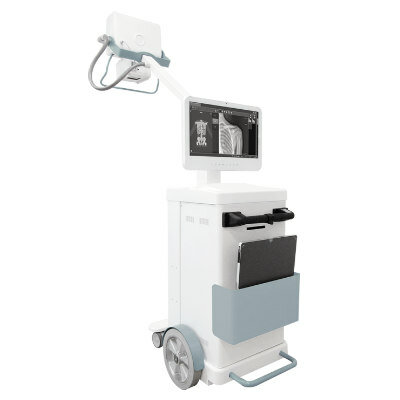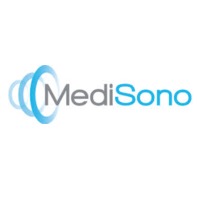Increased Pressure on Healthcare Providers in the US to Adopt Telehealth
|
By MedImaging International staff writers Posted on 23 Aug 2015 |
Young digitally-connected patients in the US are pressuring local healthcare providers to adopt telehealth solutions.
To address this, an international IT solutions and managed services provider has identified a three-stage model in the adoption of the telehealth model by healthcare providers.
According to experts at Logicalis Healthcare Solutions, the healthcare-focused arm of Logicalis US, the first stage is an ad-hoc solution; stage two includes a rationalized, departmental telehealth strategy, while stage three is a clinically integrated telehealth solution. Stage three includes advanced data exchange between healthcare providers, patients, laboratories, pharmacies and family caregivers.
Telehealth is already being used regularly in the US by 30 service lines, including radiology, neurology, and stroke care, dermatology, and behavioral health. The service lines fall into four basic telehealth categories. The first category, Synchronous telehealth, includes live, bidirectional, video-based interactions between patients and providers. The second category, Store and Forward, includes transmission of images, clinical results, education, training, and patient portals. The third category, Remote Monitoring, includes the collection of data about vital signs and health progress from chronically ill patients living at home. In the final category, Mobile Health/Wellness, care is supported by mobile devices, and promotes healthy behaviors, sends alerts and reminders, and allows remote case management such as monitoring of vital signs, advice for healthy lifestyles, and other assistance.
Ed Simcox, Healthcare practice leader, Logicalis Healthcare Solutions, said, "In the not-too-distant future, telehealth will be such an integral part of the medical experience that there will be no difference between healthcare and telehealth; telehealth will be healthcare. The tipping point, which Logicalis believes will come within the next four years, will be that point in time when more patients are using telehealth than visiting face to face with their doctors. Today's digital natives expect to interact online with service providers—including their physicians—with the same convenience they experience ride-sharing via Uber or booking a vacation room via Airbnb. To remain relevant, healthcare providers must capitalize on these expectations by providing fully integrated telehealth solutions. Those providers that haven't begun catering to the younger patient demographic using telehealth are already falling behind."
Related Links:
Logicalis Healthcare Solutions
To address this, an international IT solutions and managed services provider has identified a three-stage model in the adoption of the telehealth model by healthcare providers.
According to experts at Logicalis Healthcare Solutions, the healthcare-focused arm of Logicalis US, the first stage is an ad-hoc solution; stage two includes a rationalized, departmental telehealth strategy, while stage three is a clinically integrated telehealth solution. Stage three includes advanced data exchange between healthcare providers, patients, laboratories, pharmacies and family caregivers.
Telehealth is already being used regularly in the US by 30 service lines, including radiology, neurology, and stroke care, dermatology, and behavioral health. The service lines fall into four basic telehealth categories. The first category, Synchronous telehealth, includes live, bidirectional, video-based interactions between patients and providers. The second category, Store and Forward, includes transmission of images, clinical results, education, training, and patient portals. The third category, Remote Monitoring, includes the collection of data about vital signs and health progress from chronically ill patients living at home. In the final category, Mobile Health/Wellness, care is supported by mobile devices, and promotes healthy behaviors, sends alerts and reminders, and allows remote case management such as monitoring of vital signs, advice for healthy lifestyles, and other assistance.
Ed Simcox, Healthcare practice leader, Logicalis Healthcare Solutions, said, "In the not-too-distant future, telehealth will be such an integral part of the medical experience that there will be no difference between healthcare and telehealth; telehealth will be healthcare. The tipping point, which Logicalis believes will come within the next four years, will be that point in time when more patients are using telehealth than visiting face to face with their doctors. Today's digital natives expect to interact online with service providers—including their physicians—with the same convenience they experience ride-sharing via Uber or booking a vacation room via Airbnb. To remain relevant, healthcare providers must capitalize on these expectations by providing fully integrated telehealth solutions. Those providers that haven't begun catering to the younger patient demographic using telehealth are already falling behind."
Related Links:
Logicalis Healthcare Solutions
Latest Imaging IT News
- New Google Cloud Medical Imaging Suite Makes Imaging Healthcare Data More Accessible
- Global AI in Medical Diagnostics Market to Be Driven by Demand for Image Recognition in Radiology
- AI-Based Mammography Triage Software Helps Dramatically Improve Interpretation Process
- Artificial Intelligence (AI) Program Accurately Predicts Lung Cancer Risk from CT Images
- Image Management Platform Streamlines Treatment Plans
- AI-Based Technology for Ultrasound Image Analysis Receives FDA Approval
- AI Technology for Detecting Breast Cancer Receives CE Mark Approval
- Digital Pathology Software Improves Workflow Efficiency
- Patient-Centric Portal Facilitates Direct Imaging Access
- New Workstation Supports Customer-Driven Imaging Workflow
Channels
Radiography
view channel
Novel Breast Imaging System Proves As Effective As Mammography
Breast cancer remains the most frequently diagnosed cancer among women. It is projected that one in eight women will be diagnosed with breast cancer during her lifetime, and one in 42 women who turn 50... Read more
AI Assistance Improves Breast-Cancer Screening by Reducing False Positives
Radiologists typically detect one case of cancer for every 200 mammograms reviewed. However, these evaluations often result in false positives, leading to unnecessary patient recalls for additional testing,... Read moreMRI
view channel
PET/MRI Improves Diagnostic Accuracy for Prostate Cancer Patients
The Prostate Imaging Reporting and Data System (PI-RADS) is a five-point scale to assess potential prostate cancer in MR images. PI-RADS category 3 which offers an unclear suggestion of clinically significant... Read more
Next Generation MR-Guided Focused Ultrasound Ushers In Future of Incisionless Neurosurgery
Essential tremor, often called familial, idiopathic, or benign tremor, leads to uncontrollable shaking that significantly affects a person’s life. When traditional medications do not alleviate symptoms,... Read more
Two-Part MRI Scan Detects Prostate Cancer More Quickly without Compromising Diagnostic Quality
Prostate cancer ranks as the most prevalent cancer among men. Over the last decade, the introduction of MRI scans has significantly transformed the diagnosis process, marking the most substantial advancement... Read moreUltrasound
view channel
Deep Learning Advances Super-Resolution Ultrasound Imaging
Ultrasound localization microscopy (ULM) is an advanced imaging technique that offers high-resolution visualization of microvascular structures. It employs microbubbles, FDA-approved contrast agents, injected... Read more
Novel Ultrasound-Launched Targeted Nanoparticle Eliminates Biofilm and Bacterial Infection
Biofilms, formed by bacteria aggregating into dense communities for protection against harsh environmental conditions, are a significant contributor to various infectious diseases. Biofilms frequently... Read moreNuclear Medicine
view channel
New SPECT/CT Technique Could Change Imaging Practices and Increase Patient Access
The development of lead-212 (212Pb)-PSMA–based targeted alpha therapy (TAT) is garnering significant interest in treating patients with metastatic castration-resistant prostate cancer. The imaging of 212Pb,... Read moreNew Radiotheranostic System Detects and Treats Ovarian Cancer Noninvasively
Ovarian cancer is the most lethal gynecological cancer, with less than a 30% five-year survival rate for those diagnosed in late stages. Despite surgery and platinum-based chemotherapy being the standard... Read more
AI System Automatically and Reliably Detects Cardiac Amyloidosis Using Scintigraphy Imaging
Cardiac amyloidosis, a condition characterized by the buildup of abnormal protein deposits (amyloids) in the heart muscle, severely affects heart function and can lead to heart failure or death without... Read moreGeneral/Advanced Imaging
view channel
New AI Method Captures Uncertainty in Medical Images
In the field of biomedicine, segmentation is the process of annotating pixels from an important structure in medical images, such as organs or cells. Artificial Intelligence (AI) models are utilized to... Read more.jpg)
CT Coronary Angiography Reduces Need for Invasive Tests to Diagnose Coronary Artery Disease
Coronary artery disease (CAD), one of the leading causes of death worldwide, involves the narrowing of coronary arteries due to atherosclerosis, resulting in insufficient blood flow to the heart muscle.... Read more
Novel Blood Test Could Reduce Need for PET Imaging of Patients with Alzheimer’s
Alzheimer's disease (AD), a condition marked by cognitive decline and the presence of beta-amyloid (Aβ) plaques and neurofibrillary tangles in the brain, poses diagnostic challenges. Amyloid positron emission... Read more.jpg)
CT-Based Deep Learning Algorithm Accurately Differentiates Benign From Malignant Vertebral Fractures
The rise in the aging population is expected to result in a corresponding increase in the prevalence of vertebral fractures which can cause back pain or neurologic compromise, leading to impaired function... Read moreIndustry News
view channel
Bayer and Google Partner on New AI Product for Radiologists
Medical imaging data comprises around 90% of all healthcare data, and it is a highly complex and rich clinical data modality and serves as a vital tool for diagnosing patients. Each year, billions of medical... Read more



















